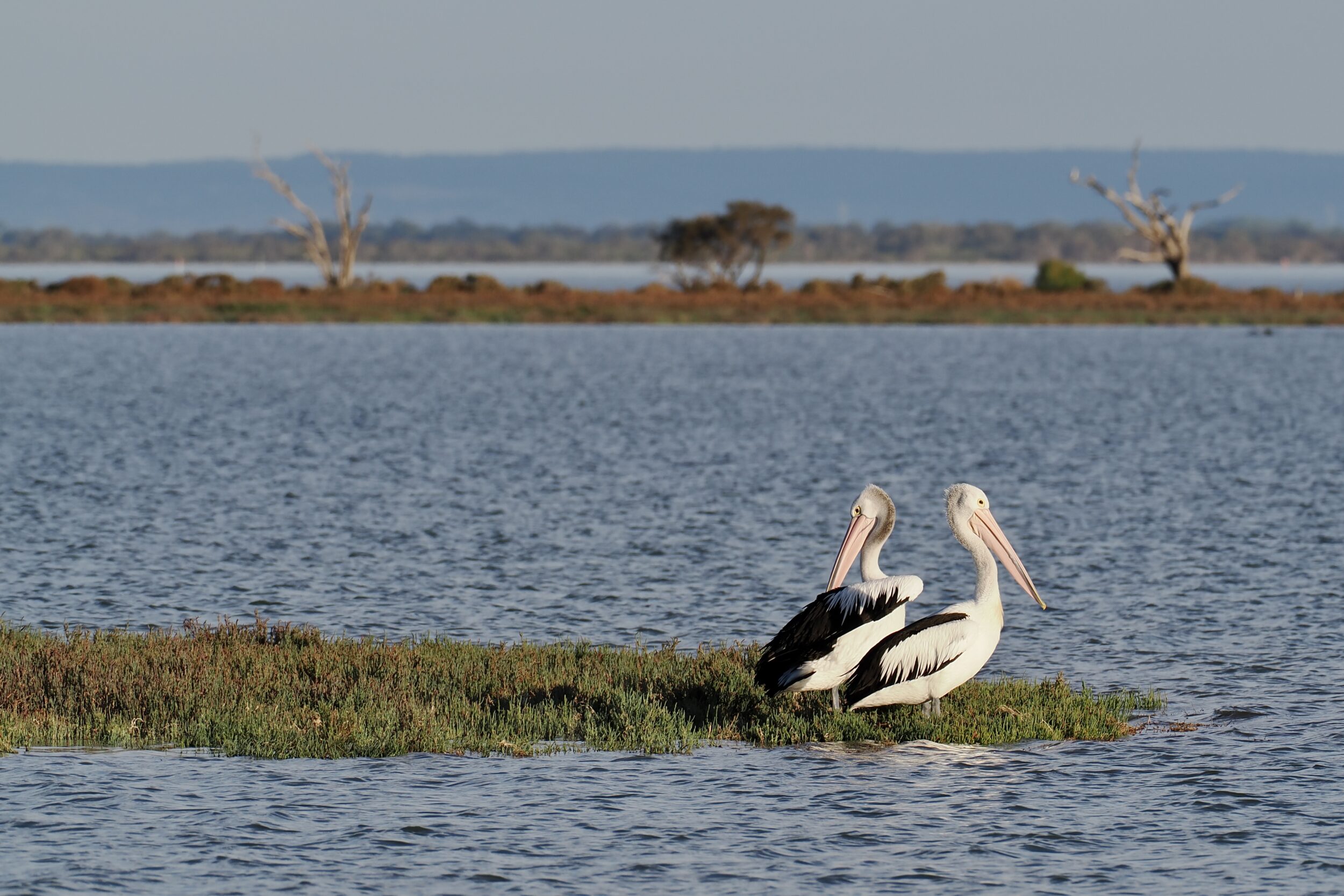Now considered by some demographers as part of “greater Perth”, Mandurah was once an “unspoilt”, sleepy little town on a very big inlet.
It is now Western Australia’s second largest city, with circa 100,000 permanent residents.
Famous/infamous for its “canal developments”, Mandurah still has a surprisingly rich array of natural attractions that are well-protected, but easy-to-access
One of them is an internationally significant bird sanctuary.
To reach it, some migratory birds travel considerably longer distances than do the English-born humans for whom Mandurah is also a “magnet”.
The Creery Wetlands are on the city’s “doorstep”, fringing the northern end of an inlet which covers an area more than twice the size of Sydney Harbour.
The Peel Inlet (aka “Peel-Harvey” inlet) is, however, very much more shallow than Sydney Harbour; the former contains much the smaller volume of water.
By April 2024 the feathered “migrants” had flown north, and this region had endured the longest dry spell in (written – I.e. since 1829) history; for both reasons, bird numbers were relatively low.
All above-tideline expanses of these samphire-rich wetlands were definitely not visibly “wet”.
This post’s “landscape” image and the next post’s “much closer” one were taken within two minutes of each other, whilst we were standing at waterside end of a boardwalk.
Click here to see and learn much more about an “undersung”, but richly rewarding destination.
(photo is ©️ Doug Spencer, taken with a 400 mm lens at 5.05 pm on 05 April 2024. The pelicans’ feet are standing on samphire plants. The image’s horizon – inland – is defined by the Darling Scarp)
